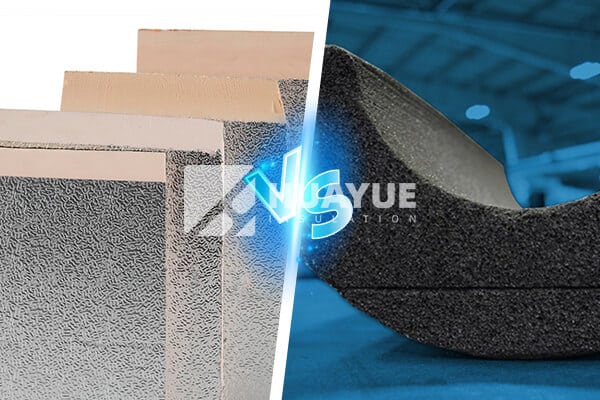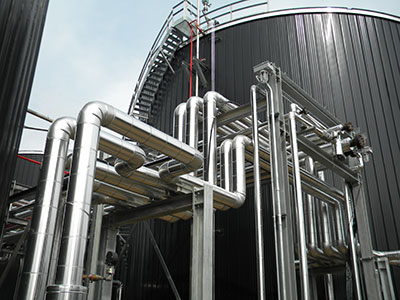Choosing the right insulation for cold tanks and piping can make or break project success. It’s not just about fire safety—think about cost, reliability, and installation ease, too.
Phenolic insulation offers better thermal performance, lower weight, and easier installation than cellular glass. Both meet strict international safety codes, but their real-world advantages differ.

From years of plant management, I know every insulation choice affects long-term energy costs, reliability, and safety. In cold piping or cryogenic tank projects, understanding the differences between phenolic foam and cellular glass means fewer complications and fewer headaches down the road. So, what makes them different? Let’s take a closer look.
What is phenolic insulation and why do so many engineers use it for cold piping?
Phenolic insulation is a light, rigid foam made with millions of tiny closed cells. It blocks water vapor, insulates very effectively, and meets tough fire and smoke codes like ASTM E84.

When I visit a HUAYUE plant, I see phenolic insulation shaped into boards, pipe shells, and complex custom pieces. Because it’s so light and easy to fabricate, installers work faster and safer. The material comes in standard densities of about 2.5 pounds per cubic foot, which helps cut down on stress to pipes, hangers, and tanks. The closed cell structure stops water vapor, greatly reducing the chance of condensation and corrosion under the insulation. Today’s phenolic foam, made to ASTM C1126 standards, absorbs almost no water and insulates nearly twice as well as cellular glass at the same temperature. It can be made as thick or thin as needed. That means you don’t waste space or pay for extra material. HUAYUE phenolic insulation can also be shipped with a tough vapor barrier applied at the factory, making it easy to trust it for tough jobs. For me, this type of insulation works best when simplicity and performance are my top priorities.
What is cellular glass insulation and why does it still have strong support in industry?
Cellular glass is an insulation made from melted and foamed glass. It’s totally inorganic and fireproof, cannot burn or smoke, and works across a huge range of temperatures.

In some industrial projects, I choose cellular glass because it offers serious fire safety and peace of mind. Blocks are cut, glued, and fabricated into pipe shells and boards, usually weighing quite a bit more than phenolic foam. The structure is made up of closed glass cells, which means water and vapor simply can’t get through. Cellular glass works well between minus 450 degrees Fahrenheit and 800 degrees, so it’s a go-to material for cryogenic tanks, chemical plants, or places where fire is a big concern. It resists most chemicals except for strong alkalis. But job site realities can be challenging. The blocks are heavy, often brittle, and need perfect joint sealing so moisture does not sneak in between the pieces. On large tanks or long pipe runs, many more sections and seams are needed, which means more room for mistakes. I always caution crews to handle cellular glass with care to avoid unnecessary breakage and wasted material. While it protects against fire and water as well as anything on the market, the extra cost in time and installation effort is something you really need to plan for.
How do installation, cost, and long-term performance compare between the two?
Phenolic insulation saves installation time, is lighter, and costs less for most jobs. Cellular glass costs more and needs careful handling, but sometimes the fire rating makes it the right choice.
On a recent tank upgrade project, I compared phenolic and cellular glass side by side. Phenolic needed less thickness to reach the same insulating value. That meant fewer parts to buy, handle, and seal. For an average 12-inch pipe in cold service, phenolic only required 2.5 inches thickness, while cellular glass needed almost twice as much, plus extra vapor barrier and jacketing to cover the larger surface. Cellular glass’s extra weight meant more pipe hangers and supports were needed—which drives up cost and complexity. Phenolic insulation’s lightness and toughness also make it less likely to crack or break under stress or misuse by workers. In practical terms, most contractors and plant engineers save money on both material and installation time using phenolic. That keeps tight budgets and project timelines more realistic.
What about corrosion and water resistance in tough operating conditions?
Phenolic and cellular glass both resist water vapor, but phenolic is less risky if installation isn’t perfect. In rough sites and high-traffic tank areas, phenolic holds up better to abuse than glass.
Every manager worries about corrosion under insulation. Both types block vapor and moisture if installed right. But cells of phenolic foam flex and take knocks from workers and equipment, while cellular glass can crack and make hidden gaps for water. In crowded piping or busy tank areas, higher density phenolic makes a good second line of defense against heels, tools, and vibration. If you wrap either insulation with a vapor barrier properly, both protect your steel pipe or vessel for years. I’ve seen projects falter when installers skip joint sealing, so always double-check these details. For underground tanks, or pipes below water tables, cellular glass is sometimes chosen because it is totally inorganic, but watch out for issues with heavy handling and breaking. For above-ground work and tanks that see lots of movement or impact, phenolic might deliver longer life with fewer surprises.
What’s the bottom line for plant managers and engineers?
If you need absolute fireproofing or must use inorganic material, cellular glass works—but expect higher costs, more handling steps, and extra care during installation. For most cold tank and piping jobs, phenolic from HUAYUE is lighter, easier, and cheaper. It insulates better, resists damage, and keeps condensation away. As always, the right insulation depends on the full job requirements, climate, and costs from start to finish.
Conclusion
Phenolic and cellular glass from HUAYUE both perform in cold service. For most tanks and piping projects, phenolic gives better value and performance.

